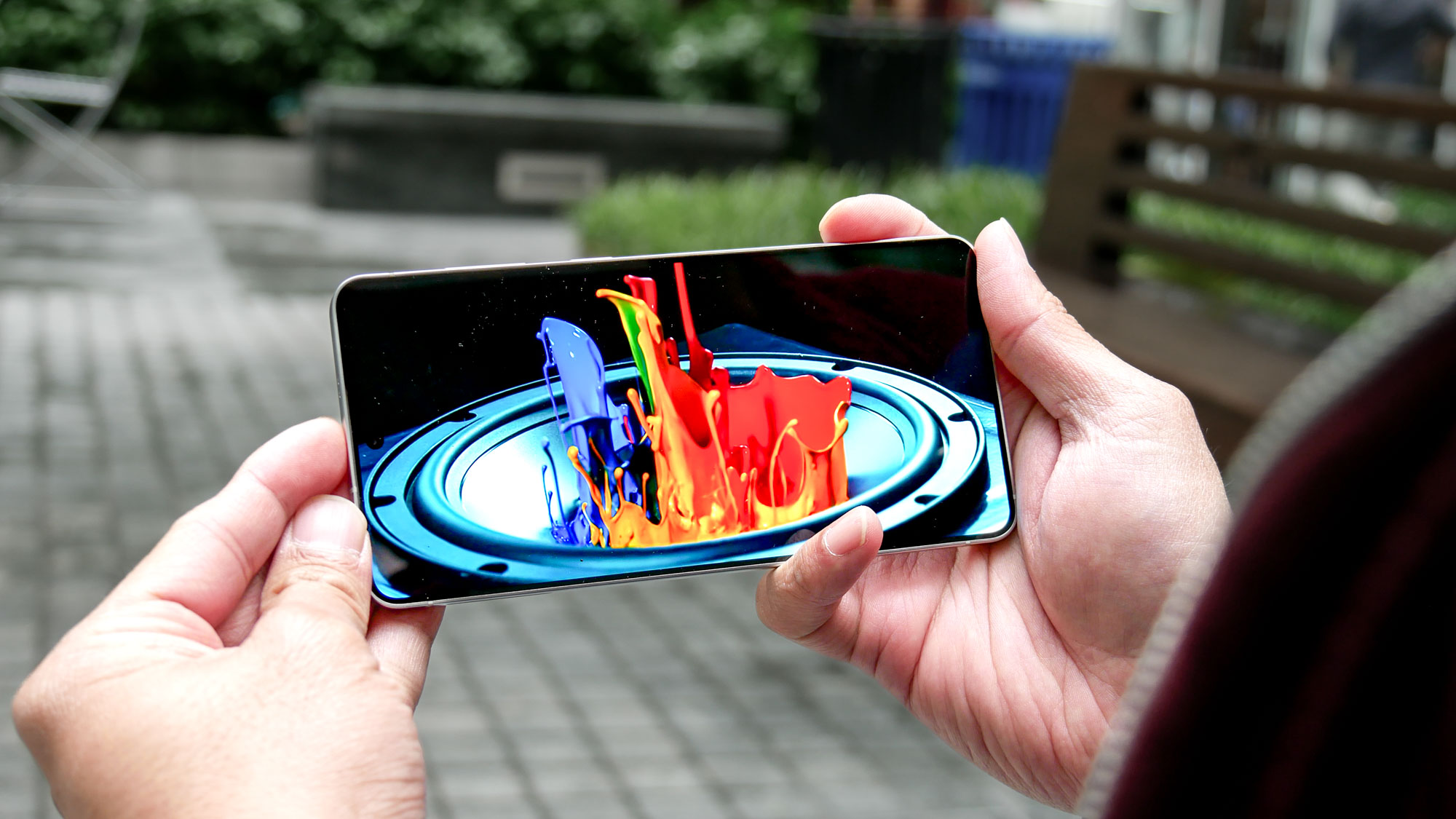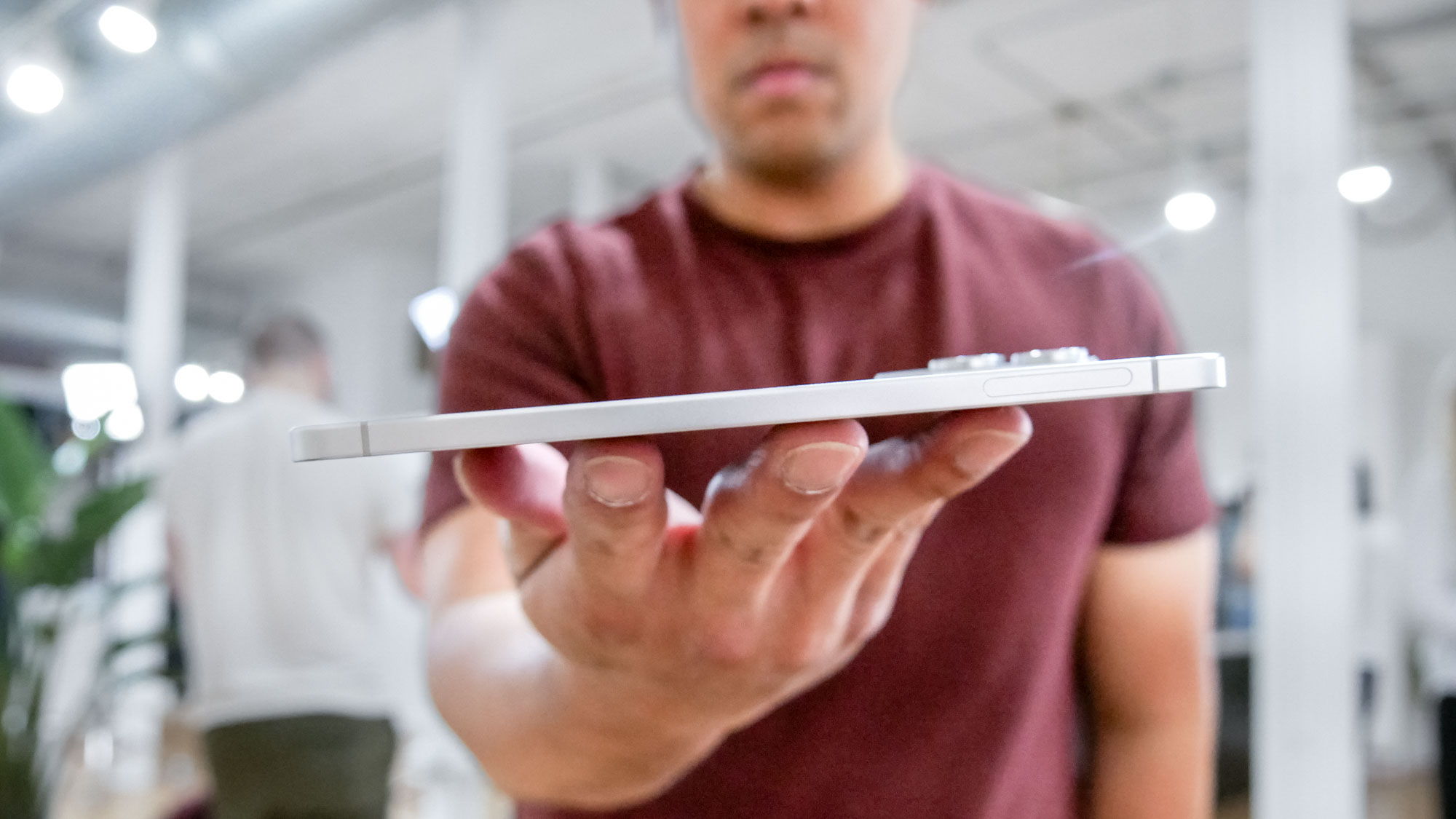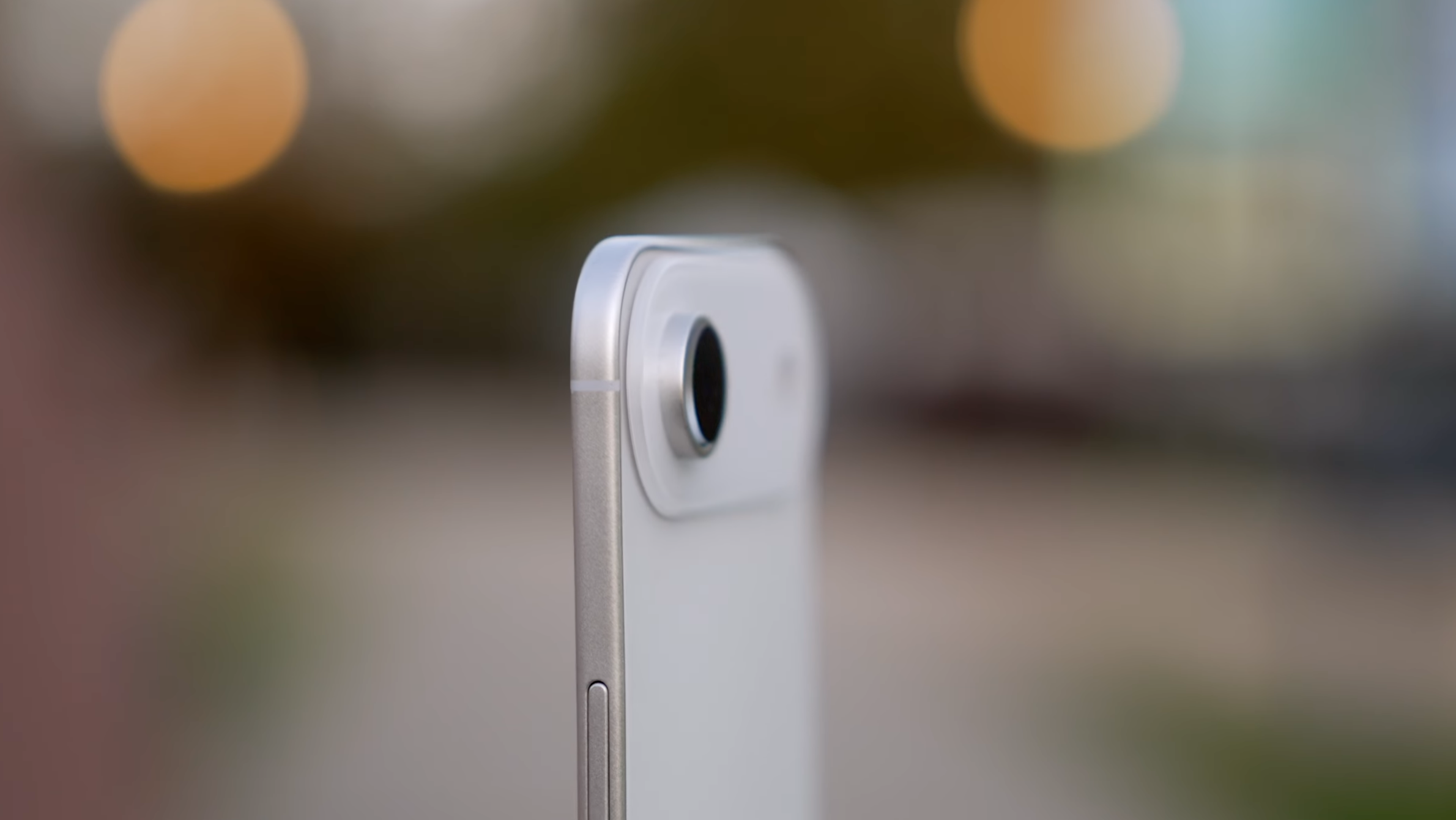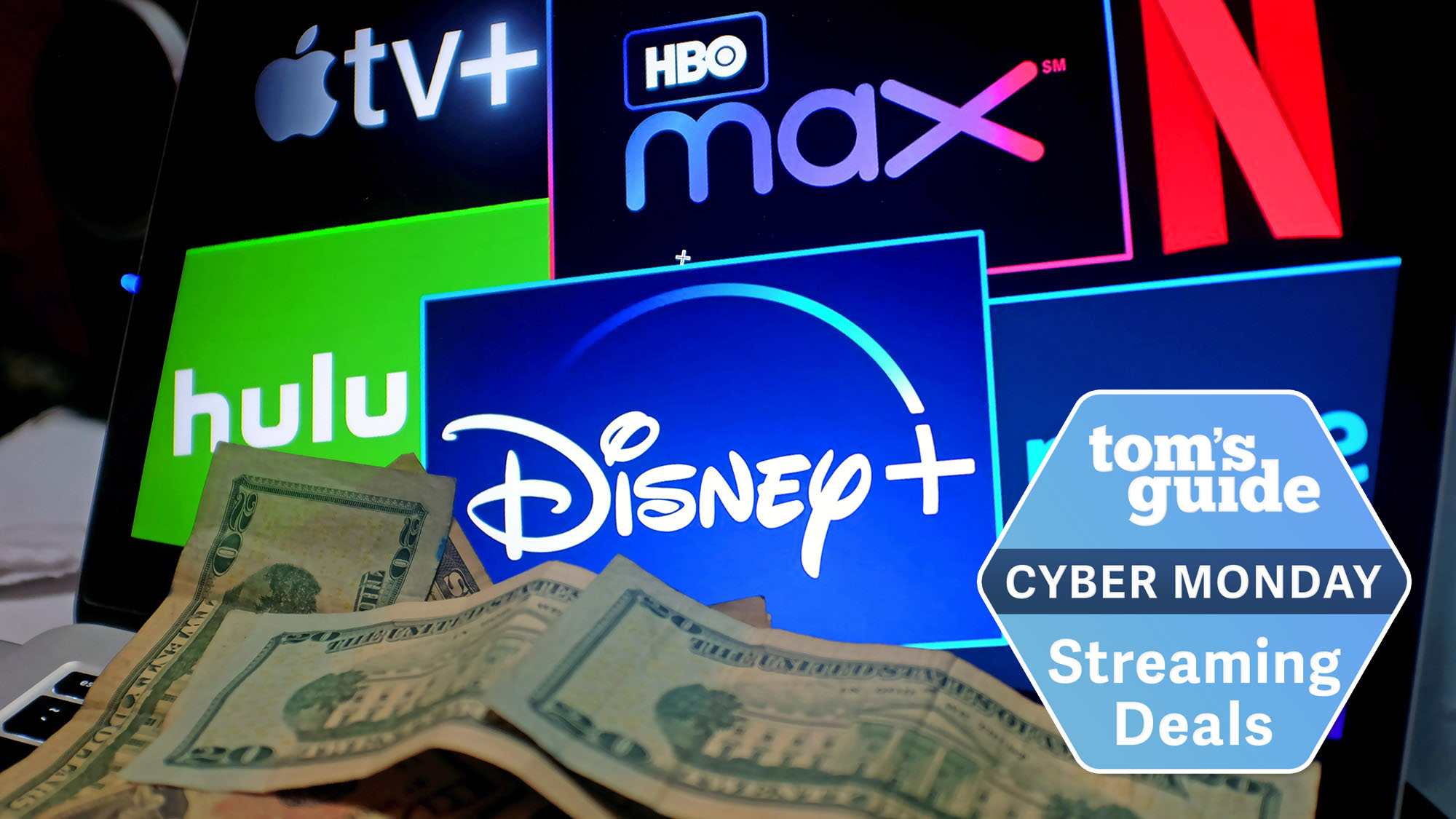The Galaxy S25 Edge shows us what the trade-off is with thinner phones — and it's not one I'd make
The thinner the phone, the less space for battery

With the Galaxy S25 Edge arriving in stores later this month and the iPhone 17 Air rumored to be following it several months from now, it's very clear that 2025 is going to be remembered for the year that gave us super thin phones from really big phone makers. But I'm beginning to worry that in their quest to produce ever thinner devices, phone makers are losing sight of some of the fundamental things consumers look for in their handsets.
Before I get into why, a few caveats are in order, as it's early days for these ultra-thin devices. Though my colleagues have had some hands-on time with the Galaxy S25 Edge, Tom's Guide is still wrapping up testing ahead of our full review. The last word on that device is a long ways from being written.
As for the iPhone 17 Air, the phone's existence has yet to be confirmed, let alone its strengths and weaknesses assessed. Rumors about the device can give us some idea of what to expect, but they're far from the full picture.
That said, some initial Galaxy S25 Edge test results coupled with some iPhone 17 Air rumors give the impression that when you opt for a thin phone, you better be prepared to sacrifice some battery life. And I don't know how many people are willing to make that trade-off.
Galaxy S25 Edge battery testing

Let's start with the Edge, since we have some concrete numbers on that phone, having put the Galaxy S25 Edge through the Tom's Guide battery test. In that test, we set a phone's screen to 150 nits of brightness and then have it surf the web over cellular until it runs out of power. An average phone lasts for a little more than 10 hours on that test, while the devices with the best phone battery life endure for 16 hours and beyond.
The Galaxy S25 Edge turned in a time of 12 hours and 38 minutes. That's more than 2.5 hours better than the average smartphone we test. But it's also much worse than any other Galaxy S25 model.
In a sense that's not a surprise. The Galaxy S25 Edge has the smallest battery of any of Samsung's current flagships, relying on a 3,900 mAh power pack. The Galaxy S25, which has a much smaller screen, features a 4,000 mAh cell, while the Galaxy S25 Plus fits in a 4,900 mAh battery. It's worth noting the S25 Edge and S25 Plus have matching screen sizes, but the Edge is 1.5mm thinner — hence the smaller battery.
Get instant access to breaking news, the hottest reviews, great deals and helpful tips.
| Row 0 - Cell 0 | Battery Size (mAh) | Battery Life (hrs:mins) |
Galaxy S25 Edge | 3,900 | 12:38 |
Galaxy S25 | 4,000 | 15:43 |
Galaxy S25 Plus | 4,900 | 16:55 |
Galaxy S25 Ultra | 5,000 | 17:14 |
The Galaxy S25 and S25 Plus posted times just shy of 16 hours and 17 hours, respectively. So you're getting up to 4 hours less battery life with the Galaxy S25 Edge even though you're paying more for Samsung's ultra-thin model.
Our battery test numbers reflect performance in a very intensive task, but even in real-world usage, the Galaxy S25 Edge's battery levels drop a lot more noticeably than other Samsung flagships. My colleague John Velasco has been using the Galaxy S25 Edge, and he's noticed the battery percentage dropping when he puts the phone to test.
In ordinary use that doesn't involve the kinds of photo-taking and video streaming that device reviewers put phones through, I'd imagine the Galaxy S25 Edge can get through the day on a charge. But I think you're going to need to keep a charging cable handy with that phone just in case.
iPhone 17 Air battery rumors

With the iPhone 17 Air still the stuff of rumors, our information about that phone's battery if far less concrete. But what we've heard so far is not terribly encouraging.
If the Galaxy S25 Edge is turning to a smaller battery due to a lack of space, the iPhone 17 Air may be even more constrained. Apple's phone is rumored to be even thinner than the Edge — 5.65mm at its thinnest point compared to 5.8mm for the Edge. And Apple as a rule tends to equip its phones with smaller batteries than the competition, as it relies on the power management features of its A series silicon to help iPhones las a long time on a charge.
How thin? A new rumor from an online leaker claims that Apple is going to use a 2,800 mAh battery in the iPhone 17 Air. To put that number in context, the iPhone 16 features the smallest power pack of any current iPhone model, and that's a 3,561 mAh battery based on teardowns.
The last time an iPhone had a battery as small as what's been rumored for the iPhone 17 Air, it was the 2,815 mAh cell inside the iPhone 12. That particular model faired poorly on our battery test, finishing below the average for smartphones at the time. That had more to do with the fact that the iPhone 12 was Apple's first handset to feature 5G connectivity and early 5G consumed a lot of power, but the small battery size didn't help.
That's not to say history will repeat itself with the iPhone 17 Air. Even if the rumored battery size proves to be accurate, additional rumors claim that Apple will turn to silicon carbon battery technology to help squeeze more endurance out of that phone.
You're probably not going to get close to what the iPhone 16 Pro Max offers as the longest-lasting iPhone we've ever tested, but there's every reason to assume that the iPhone 17 Air, like the Galaxy S25 Edge, will offer better than average battery life.
Battery outlook
But is better than average good enough, especially when we're talking about premium devices? All of us value different things in our phones, but one thing that usually cracks the top five demands for most people is a phone that lasts a while on a charge.
I can't speak for Apple, but Samsung seems to have concluded that a thin design is enough to make the Galaxy S25 Edge an attractive proposition for people, who will be willing to accept things like less battery life or no telephoto lens if it means their phone is easier to carry around. Perhaps, that's true enough in some cases. But it's not a trade-off I'd want to make.
More from Tom's Guide
- Samsung Galaxy S25 Edge pre-orders — how to get $800 off Samsung's new phone
- The iPhone 17 Air has nothing to worry about now that we've seen the Samsung Galaxy S25 Edge — here’s why
- Sorry Samsung, thinner phones like the Galaxy S25 Edge are not a selling point to me
Philip Michaels is a Managing Editor at Tom's Guide. He's been covering personal technology since 1999 and was in the building when Steve Jobs showed off the iPhone for the first time. He's been evaluating smartphones since that first iPhone debuted in 2007, and he's been following phone carriers and smartphone plans since 2015. He has strong opinions about Apple, the Oakland Athletics, old movies and proper butchery techniques. Follow him at @PhilipMichaels.
You must confirm your public display name before commenting
Please logout and then login again, you will then be prompted to enter your display name.

